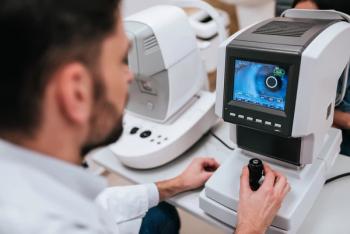
AAOpt 2024: Defining, researching, diagnosing, and treating keratoconus
Susan Gromacki, OD, MS, FAAO, FSLS, details a panel that provided a complete course on keratoconus.
Susan Gromacki, OD, MS, FAAO, FSLS, detailed a panel discussion on keratoconus, led by her and her colleagues Gloria Chiu, OD, FAAO, FSLS, Dr. Tracy Lynn Schroeder Swartz OD, MS, FAAO, and Bill Tullo, OD, FAAO. The session covered the complete course of keratoconus, from definition and research to diagnosis and treatment options. A key focus was the importance of early diagnosis of keratoconus. As a progressive condition, early intervention is crucial to prevent vision loss and impact on patients' quality of life. Gromacki emphasized that while keratoconus may be considered a rare disease, it is more prevalent than many realize. She provided several diagnostic clues that optometrists can look for, even without advanced imaging equipment like topographers. These clues include high astigmatism, distorted mires on autorefraction, and patients' difficulty distinguishing small changes in lens power.
Gromacki also stressed the value of listening to patient symptoms, such as frequent doctor visits and unsuccessful soft contact lens fittings, as these can be early indicators of keratoconus. The panel discussed the challenges in the referral process, where patients often see multiple providers before reaching a corneal specialist. They recommended that optometrists refer patients directly to specialists who have the necessary diagnostic tools, like topographers, and can provide comprehensive care, including corneal cross-linking procedures. The key takeaways for eye care practitioners were the prevalence of keratoconus, the need for early diagnosis, and the availability of effective treatment options, such as gas permeable lenses and cross-linking. By educating optometrists, investing in diagnostic equipment, and developing referral networks, the panel aimed to improve the management of keratoconus and enhance patient outcomes.
Newsletter
Want more insights like this? Subscribe to Optometry Times and get clinical pearls and practice tips delivered straight to your inbox.













































